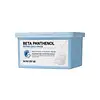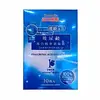What's inside
What's inside
 Key Ingredients
Key Ingredients

 Benefits
Benefits

 Concerns
Concerns

 Ingredients Side-by-side
Ingredients Side-by-side

Water
Skin ConditioningButylene Glycol
HumectantNiacinamide
SmoothingGlycerin
HumectantPanthenol
Skin ConditioningPropanediol
SolventDipropylene Glycol
HumectantOlea Europaea Fruit Oil
MaskingGlycereth-26
HumectantPolyglyceryl-10 Laurate
Skin ConditioningHydroxyacetophenone
AntioxidantCaprylyl Glycol
EmollientXanthan Gum
EmulsifyingEthylhexylglycerin
Skin Conditioning1,2-Hexanediol
Skin ConditioningAcrylates/C10-30 Alkyl Acrylate Crosspolymer
Emulsion StabilisingArginine
MaskingPolyglyceryl-3 Methylglucose Distearate
EmulsifyingGlyceryl Stearate Se
EmulsifyingPantolactone
HumectantMethyl Glucose Sesquistearate
EmollientDipotassium Glycyrrhizate
HumectantAllantoin
Skin ConditioningCitric Acid
BufferingSodium Citrate
BufferingSodium Hyaluronate
HumectantDiethylhexyl Sodium Sulfosuccinate
CleansingXylitylglucoside
HumectantMusa Sapientum Fruit Extract
Skin ConditioningAnhydroxylitol
HumectantRosa Damascena Flower Water
MaskingPyrus Communis Fruit Extract
Skin ConditioningPrunus Domestica Fruit Extract
MoisturisingXylitol
HumectantCucumis Melo Fruit Extract
Skin ConditioningGlyceryl Glucoside
HumectantHedera Helix Leaf/Stem Extract
AntimicrobialOctyldodecanol
EmollientEctoin
Skin ConditioningHydrogenated Lecithin
EmulsifyingBeta-Sitosterol
Emulsion StabilisingGlucose
HumectantSodium Palmitoyl Sarcosinate
CleansingLactobacillus Ferment Lysate
Skin ConditioningHydrolyzed Sodium Hyaluronate
Skin ConditioningDimethylsilanol Hyaluronate
HumectantHydrolyzed Hyaluronic Acid
HumectantHyaluronic Acid
HumectantPotassium Hyaluronate
Skin ConditioningHydroxypropyltrimonium Hyaluronate
Sodium Hyaluronate Crosspolymer
HumectantSodium Hyaluronate Dimethylsilanol
HumectantCeramide NP
Skin ConditioningSodium Acetylated Hyaluronate
HumectantAcetyl Tetrapeptide-40
Skin ConditioningDisodium EDTA
Water, Butylene Glycol, Niacinamide, Glycerin, Panthenol, Propanediol, Dipropylene Glycol, Olea Europaea Fruit Oil, Glycereth-26, Polyglyceryl-10 Laurate, Hydroxyacetophenone, Caprylyl Glycol, Xanthan Gum, Ethylhexylglycerin, 1,2-Hexanediol, Acrylates/C10-30 Alkyl Acrylate Crosspolymer, Arginine, Polyglyceryl-3 Methylglucose Distearate, Glyceryl Stearate Se, Pantolactone, Methyl Glucose Sesquistearate, Dipotassium Glycyrrhizate, Allantoin, Citric Acid, Sodium Citrate, Sodium Hyaluronate, Diethylhexyl Sodium Sulfosuccinate, Xylitylglucoside, Musa Sapientum Fruit Extract, Anhydroxylitol, Rosa Damascena Flower Water, Pyrus Communis Fruit Extract, Prunus Domestica Fruit Extract, Xylitol, Cucumis Melo Fruit Extract, Glyceryl Glucoside, Hedera Helix Leaf/Stem Extract, Octyldodecanol, Ectoin, Hydrogenated Lecithin, Beta-Sitosterol, Glucose, Sodium Palmitoyl Sarcosinate, Lactobacillus Ferment Lysate, Hydrolyzed Sodium Hyaluronate, Dimethylsilanol Hyaluronate, Hydrolyzed Hyaluronic Acid, Hyaluronic Acid, Potassium Hyaluronate, Hydroxypropyltrimonium Hyaluronate, Sodium Hyaluronate Crosspolymer, Sodium Hyaluronate Dimethylsilanol, Ceramide NP, Sodium Acetylated Hyaluronate, Acetyl Tetrapeptide-40, Disodium EDTA
Water
Skin ConditioningDipropylene Glycol
HumectantIsopentyldiol
HumectantGlycosyl Trehalose
Emulsion StabilisingHydrogenated Starch Hydrolysate
HumectantDiglycerin
HumectantPolyglycerin-3
HumectantPEG/PPG/Polybutylene Glycol-8/5/3 Glycerin
HumectantPPG-28-Buteth-35
Skin ConditioningOlive Oil PEG-7 Esters
EmollientNiacinamide
SmoothingPEG-40 Hydrogenated Castor Oil
EmulsifyingPentylene Glycol
Skin ConditioningSodium PCA
HumectantPhenoxyethanol
PreservativeXanthan Gum
EmulsifyingMethylparaben
PreservativePanthenol
Skin ConditioningSodium Hyaluronate
HumectantHydrolyzed Hyaluronic Acid
HumectantDipotassium Glycyrrhizate
HumectantAllantoin
Skin ConditioningChlorphenesin
AntimicrobialSodium Carbomer
Emulsion StabilisingAcrylates/Vinyl Isodecanoate Crosspolymer
Emulsion StabilisingCentella Asiatica Extract
CleansingPholiota Microspora Polysaccharides
EmollientCeramide NP
Skin ConditioningCeramide AP
Skin ConditioningCeramide EOP
Skin ConditioningSaccharomyces/Coix Lacryma-Jobi Ma-Yuen Seed Ferment Filtrate
Skin ConditioningHydrolyzed Soybean Extract
Skin ConditioningSolanum Melongena Fruit Extract
Skin ConditioningRice Ferment Filtrate
Skin ConditioningLuffa Cylindrica Fruit/Leaf/Stem Extract
Skin ConditioningSqualane
EmollientParfum
MaskingHydrolyzed Collagen
EmollientWater, Dipropylene Glycol, Isopentyldiol, Glycosyl Trehalose, Hydrogenated Starch Hydrolysate, Diglycerin, Polyglycerin-3, PEG/PPG/Polybutylene Glycol-8/5/3 Glycerin, PPG-28-Buteth-35, Olive Oil PEG-7 Esters, Niacinamide, PEG-40 Hydrogenated Castor Oil, Pentylene Glycol, Sodium PCA, Phenoxyethanol, Xanthan Gum, Methylparaben, Panthenol, Sodium Hyaluronate, Hydrolyzed Hyaluronic Acid, Dipotassium Glycyrrhizate, Allantoin, Chlorphenesin, Sodium Carbomer, Acrylates/Vinyl Isodecanoate Crosspolymer, Centella Asiatica Extract, Pholiota Microspora Polysaccharides, Ceramide NP, Ceramide AP, Ceramide EOP, Saccharomyces/Coix Lacryma-Jobi Ma-Yuen Seed Ferment Filtrate, Hydrolyzed Soybean Extract, Solanum Melongena Fruit Extract, Rice Ferment Filtrate, Luffa Cylindrica Fruit/Leaf/Stem Extract, Squalane, Parfum, Hydrolyzed Collagen
Ingredients Explained
These ingredients are found in both products.
Ingredients higher up in an ingredient list are typically present in a larger amount.
Allantoin is a soothing ingredient known for its protective and moisturizingg properties. Because of this, it is often added to products with strong active ingredients.
Studies show higher concentrations of this ingredient can promote wound healing.
Though it can be derived from the comfrey plant, allantoin is produced synthetically for cosmetic products to ensure purity.
Learn more about AllantoinCeramide NP is a type of ceramide and formally known as ceramide 3.
Ceramides are intercellular lipids naturally found in our skin that bonds dead skin cells together to create a barrier. They are known for their ability to hold water and thus are a great ingredient for dry skin.
Ceramides are an important building block for our skin barrier. A stronger barrier helps the skin look more firm and hydrated. By bolstering the skin ceramides act as a barrier against irritating ingredients. This can help with inflammation as well.
If you would like to eat ceramides, sweet potatoes contain a small amount.
Read more about other common types of ceramides here:
Ceramide AP
Ceramide EOP
Dipotassium Glycyrrhizate comes from licorice root.
Extracts of licorice have demonstrated to have antibacterial, anti‐inflammatory, antiviral, antioxidant properties.
One component, glabridin, has extra potent antioxidant and soothing properties. It has also been found to block pigmentation from UVB rays in guinea pigs.
Licorice Root also contains a flavonoid. Flavonoids are a natural substance from in plants. Flavonoids also have antioxidant properties.
Another component, glycyrrhizin, has been found to have anti-inflammatory and antimicrobial benefits. This may make licorice root extract effective at treating acne. However, more research is needed to support this.
Liquiritin is one of the flavone compounds found in licorice. It has been found to help lighten skin by preventing tyrosinase from reacting with tyrosine. When the two react, protein is converted to melanin. Melanin is the substance in your body that gives your features pigmentation.
Licorice root is native to Southern Europe and Asia. It has been used in traditional Chinese medicine to help with respiratory issues.
Learn more about Dipotassium GlycyrrhizateDipropylene Glycol is a synthetically created humectant, stabilizer, and solvent.
This ingredient helps:
Dipropylene glycol is technically an alcohol, but it belongs to the glycol family (often considered part of the ‘good’ alcohols). This means it is hydrating and gentle on skin unlike drying solvent alcohols like denatured alcohol.
As a masking agent, Dipropylene Glycol can be used to cover the smell of other ingredients. However, it does not have a scent.
Studies show Dipropylene Glycol is considered safe to use in skincare.
Learn more about Dipropylene GlycolHydrolyzed Hyaluronic Acid is a form of hyaluronic acid. It is created by the hydrolysis of hyaluronic acid with a high molecular weight. Once created, Hydrolyzed Hyaluronic Acid has a low molecular weight.
Low molecular weight HA has been shown to hydrate and increase elasticity of the skin. Increasing elasticity is also associated with reduction of wrinkle depth.
One study found topical low molecular weight hyaluronic acid may be considered for the treatment of rosacea in the adult population. However, we always recommend speaking with a professional about your skin concerns.
Hyaluronic acids are a humectant. This means they draw moisture from the air. Hyaluronic acids help moisturize, soothe, and protect the skin.
Read more about other common forms of hyaluronic acid:
Learn more about Hydrolyzed Hyaluronic AcidNiacinamide is a multitasking form of vitamin B3 that strengthens the skin barrier, reduces pores and dark spots, regulates oil, and improves signs of aging.
And the best part? It's gentle and well-tolerated by most skin types, including sensitive and reactive skin.
You might have heard of "niacin flush", or the reddening of skin that causes itchiness. Niacinamide has not been found to cause this.
In very rare cases, some individuals may not be able to tolerate niacinamide at all or experience an allergic reaction to it.
If you are experiencing flaking, irritation, and dryness with this ingredient, be sure to double check all your products as this ingredient can be found in all categories of skincare.
When incorporating niacinamide into your routine, look out for concentration amounts. Typically, 5% niacinamide provides benefits such as fading dark spots. However, if you have sensitive skin, it is better to begin with a smaller concentration.
When you apply niacinamide to your skin, your body converts it into nicotinamide adenine dinucleotide (NAD). NAD is an essential coenzyme that is already found in your cells as "fuel" and powers countless biological processes.
In your skin, NAD helps repair cell damage, produce new healthy cells, support collagen production, strengthen the skin barrier, and fight environmental stressors (like UV and pollution).
Our natural NAD levels start to decline with age, leading to slower skin repair, visible aging, and a weaker skin barrier. By providing your skin niacinamide, you're recharging your skin's NAD levels. This leads to stronger, healthier, and younger looking skin.
Another name for vitamin B3 is nicotinamide. This vitamin is water-soluble and our bodies don't store it. We obtain Vitamin B3 from either food or skincare. Meat, fish, wheat, yeast, and leafy greens contain vitamin B3.
The type of niacinamide used in skincare is synthetically created.
Learn more about NiacinamidePanthenol is a common ingredient that helps hydrate and soothe the skin. It is found naturally in our skin and hair.
There are two forms of panthenol: D and L.
D-panthenol is also known as dexpanthenol. Most cosmetics use dexpanthenol or a mixture of D and L-panthenol.
Panthenol is famous due to its ability to go deeper into the skin's layers. Using this ingredient has numerous pros (and no cons):
Like hyaluronic acid, panthenol is a humectant. Humectants are able to bind and hold large amounts of water to keep skin hydrated.
This ingredient works well for wound healing. It works by increasing tissue in the wound and helps close open wounds.
Once oxidized, panthenol converts to pantothenic acid. Panthothenic acid is found in all living cells.
This ingredient is also referred to as pro-vitamin B5.
Learn more about PanthenolSodium Hyaluronate is hyaluronic acid's salt form. It is commonly derived from the sodium salt of hyaluronic acid.
Like hyaluronic acid, it is great at holding water and acts as a humectant. This makes it a great skin hydrating ingredient.
Sodium Hyaluronate is naturally occurring in our bodies and is mostly found in eye fluid and joints.
These are some other common types of Hyaluronic Acid:
Learn more about Sodium HyaluronateWater. It's the most common cosmetic ingredient of all. You'll usually see it at the top of ingredient lists, meaning that it makes up the largest part of the product.
So why is it so popular? Water most often acts as a solvent - this means that it helps dissolve other ingredients into the formulation.
You'll also recognize water as that liquid we all need to stay alive. If you see this, drink a glass of water. Stay hydrated!
Learn more about WaterXanthan gum is used as a stabilizer and thickener within cosmetic products. It helps give products a sticky, thick feeling - preventing them from being too runny.
On the technical side of things, xanthan gum is a polysaccharide - a combination consisting of multiple sugar molecules bonded together.
Xanthan gum is a pretty common and great ingredient. It is a natural, non-toxic, non-irritating ingredient that is also commonly used in food products.
Learn more about Xanthan Gum